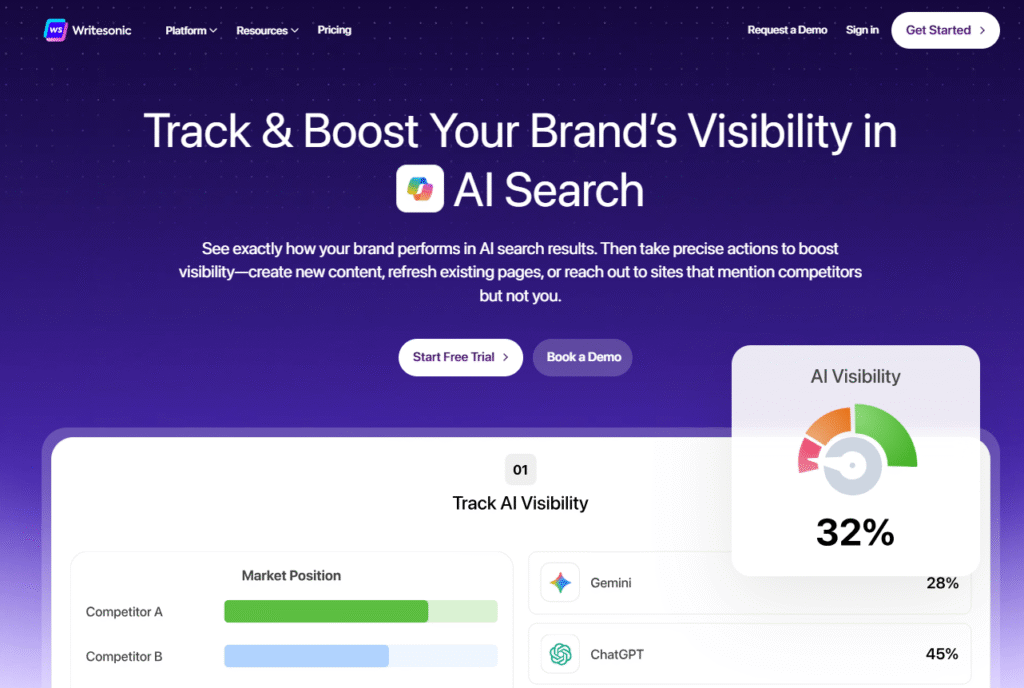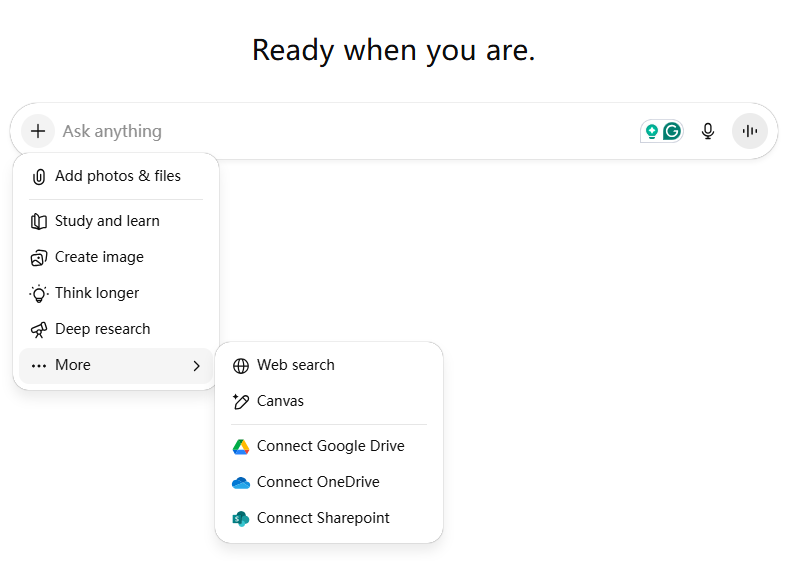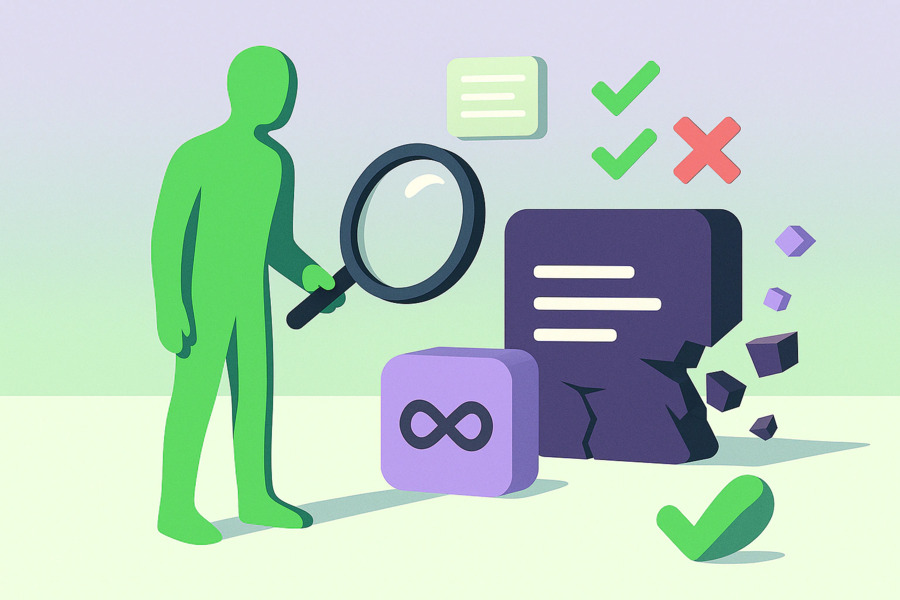Whether you’re crafting blog posts, social updates, or product descriptions, the pressure to deliver engaging, high-quality content is real. And if you’re like many creators and marketers, you’ve probably looked to AI writing tools to keep up—or better yet, get ahead.
Enter Writesonic vs ChatGPT—two heavyweights in the AI content creation space. Each brings unique strengths to the table, but which one is the right fit for you?
In this detailed comparison, we’ll break down what sets these platforms apart, who they’re designed for, and how they can integrate into your workflow. No fluff, no bias—just the insights you need to make an informed decision.
What is Writesonic?
Writesonic is an AI-powered writing assistant built with a clear focus: helping marketers and businesses create high-converting content quickly.
Unlike some broader AI tools, Writesonic specializes in marketing copy, from ads and landing pages to product descriptions and email campaigns. It’s designed for those who need to produce professional, polished content without spending hours on each piece.

Key Features of Writesonic:
- Template Library: Offers 100+ pre-built templates for various marketing formats (e.g., Facebook ads, Google headlines, blog outlines).
- SEO Integration: Includes built-in SEO tools powered by SurferSEO for real-time content optimization and grading.
- High-Speed Generation: Enables rapid content production, ideal for users with high-volume needs.
- User-Friendly Interface: Simple, intuitive dashboard designed for ease of use—no prompt engineering required.
- Brand Voice Customization: Allows users to maintain consistent brand tone and style across all generated content.
What is ChatGPT?
ChatGPT, developed by OpenAI, is a versatile language model known for its conversational depth and wide-ranging capabilities. It’s less of a niche marketing tool and more of a digital Swiss Army knife—equally capable of drafting emails, brainstorming ideas, generating stories, and even helping with programming tasks.
Its interactive, chat-based format allows for a more natural and iterative creative process. You can refine responses, ask follow-up questions, and guide the AI toward your desired outcome through conversation.

Key Features of ChatGPT
- Conversational Depth: Engages in multi-turn dialogue, remembers context, and allows iterative refinement of responses.
- Broad Applicability: Supports diverse tasks including writing, coding, idea generation, translation, and tutoring.
- GPT-4 Access: Paid subscribers receive access to the more advanced GPT-4 model, offering improved accuracy and creativity.
- Browser and Plugin Support: ChatGPT Plus includes browsing capability and third-party plugins for real-time data and extended functionality.
- High Adaptability: Functions as a general-purpose AI assistant without relying on templates—responses are shaped through natural language ChatGPT prompts.
Writesonic vs ChatGPT: A Detailed Comparison
When it comes to choosing between Writesonic vs ChatGPT, it often boils down to specificity versus flexibility. Below, we compare them across several key categories to help you decide which aligns best with your goals.
1. Content Quality
Writesonic shines in producing marketing-ready content. Its outputs are often polished, conversion-focused, and require little editing. If you need ad copy that sells or blog posts optimized for SEO, Writesonic delivers consistency and relevance.
ChatGPT, on the other hand, offers broader creativity and a more natural tone. It’s great for exploratory writing, brainstorming, and content that requires a human touch—like storytelling or conversational blogs. However, it may need more fine-tuning to match brand voice or marketing objectives.
2. Ease of Use
Writesonic’s template-based system makes it extremely approachable. You pick a use case, fill in some details, and let the AI do the rest. It’s built for efficiency and requires minimal prompting skills.
ChatGPT offers more freedom but demands better prompt engineering. You’ll get the best results if you learn how to structure requests clearly and iteratively. This makes it powerful but slightly less intuitive for users who want a streamlined, goal-specific experience.
3. SEO and Integration Capabilities
Writesonic has a clear edge here with built-in SEO tools and direct integration with SurferSEO. It’s designed to help you create content that ranks, offering keyword suggestions and content grading based on real-time data.
ChatGPT doesn’t natively include SEO features, but it can be combined with other tools or plugins for similar functionality. Its browsing feature (available in Plus versions) can pull in current information, which is helpful for research-based content.
4. Pricing and Value
Writesonic operates on a tiered pricing model based on word count and features. It offers a free plan with limited credits, plus affordable entry-level plans suitable for freelancers and small teams.
ChatGPT also has a free version powered by GPT-3.5. The Plus subscription unlocks GPT-4, plugins, and browsing at a competitive monthly rate. It’s a strong value for users who want an all-in-one AI tool for diverse applications.
Conclusion on Writesonic vs ChatGPT
So, where does that leave us in the Writesonic vs ChatGPT debate?
Choose Writesonic if you’re a marketer, entrepreneur, or content creator focused on scaling output without sacrificing quality. Its marketing-specific features, SEO integrations, and user-friendly design make it ideal for producing high-converting content quickly.
Choose ChatGPT if you value versatility and enjoy a more hands-on, creative process. It’s perfect for writers, developers, educators, and anyone who needs a multi-purpose AI assistant for both professional and personal tasks.
You might even find that using both tools in tandem works best—Writesonic for marketing content and ChatGPT for ideation, research, and more nuanced writing.



